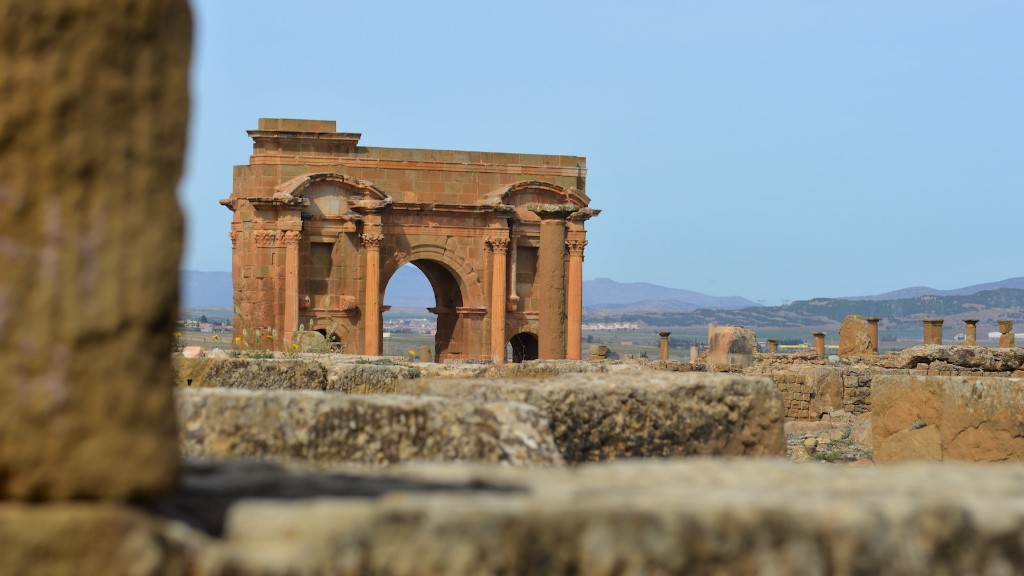Ancient Roman Money
A network of complex monetary systems was developed in Ancient Rome. Before the first century BCE, Rome used bronze coins. Other ancient Mediterranean monetary systems such as Greek coins were used in the early days of the Roman Republic (509-27 BC). In the late Republic and early Empire, Roman coins began to be mass produced, allowing for larger circulation and extensive trading.
The earliest Roman coins include the Aesgrave and Aes Auctus. These consisted of both bronze and iron coins, with a value of one Roman pound of bronze. A single Aesgrave coin was equivalent to 1/48th of a Roman pound. Later bronze coins included the dupondius, quadrigatus, and semis, with the value of these coins varying throughout their time period. In addition, silver coins such as the denarius and quinarius were minted.
In the latter part of the Republic, gold coins such as the aureus began to be issued. By the first century AD, gold coins were the main form of currency in Rome, eventually gaining increasingly higher denominations. Gold coins also rose to dominate international trade as the Roman Empire expanded. The aureus usually represented a day’s wages for a laborer or soldier. Higher denominations were the decussis and the sestertius. The sestertius was the largest of the three coins and represented the equivalent of four day’s wages for a laborer or soldier.
The value of Roman coins were determined by two main factors. Firstly, coins were based on certain weights, with a libra (Roman pound) of bronze coins being worth a certain amount. Secondly, the value of Roman currency was determined by the amount of precious metals found in the coins. This allowed Roman coins to remain valuable even after a decrease in their physical weight. This was due to the accumulation of base metals in the coins, making them heavier than originally intended. During the Empire, coins began to become debased, with the amount of precious metals in each coin decreasing over time. This led to the debasement of Roman currency in a period of time called the “Decline and Fall of the Roman Currency.”
Roman Taxations and Financial Regulations
The Roman Senate and the Emperors imposed financial regulations and taxes throughout the Roman Empire to provide funds for the army and government. Taxation was an important source of revenue for the Roman government, mainly in the form of land taxes. Land was taxed at a rate of one hundredth of its value, which increased over time. Economic regulations were also imposed in order to maintain the value of Roman currency. For example, the Lex Papia Poppaea of AD 9 set limits on the amount of gold and silver coins a person could possess. These restrictions led to the establishment of a banking system in the Roman Empire.
Roman taxation and financial regulations were effective at maintaining a stable economy and generating revenue for the government. They allowed Roman coins to maintain value, even in instances of inflation due to the deposition of precious metals. In addition, taxation also had a social aspect; Roman citizens were seen as “supporters” of the government, leading to an increase in civic pride. Taxation was seen as a way to allow the empowerment of the Roman people by providing them with the resources to maintain their way of life.
The Role of Money in Ancient Rome
Money was an essential part of daily life in Ancient Rome. It was used to pay wages and subsidies, to buy goods and services, and to trade with other countries. Money was also used to adorn everyday objects. Coins of all denominations were inscribed with symbols and messages, some even featuring the face of emperors. As a result, they served as not just a form of exchange, but also as a form of propaganda.
Roman coins not only had political and economic importance, but were also widely used in Roman social practices. For instance, coins were sometimes used as gifts or tokens of trust. In addition, coins could be used as a means of providing hospitality to guests. Coins were also prominently featured during festivals and public spectacles, when people would pay with coins for the privilege of being a witness. In this way, Roman coins were integral to public life.
Decline of Roman Economics
The fall of the Roman Empire resulted in a sharp decline in the Roman economy. This was caused by a decrease in GDP, widespread poverty, and a decrease in population. Coins of all denominations became scarce, especially gold coins, leading to an increase in counterfeiting. As a result, Roman coins began to be devalued, leading to an eventual collapse of the Roman monetary system.
The fall of the Roman economy had consequences far beyond its borders. The entire Mediterranean region was affected by the economic downturn in Rome, leading to increased poverty and a decrease in trading activities. This led to the collapse of other economies, further weakening the region. As a result, the fall of the Roman economy ushered in an era of financial instability in the Mediterranean.
Impact of Roman Economy on Modern Economics
Despite its eventual fall, the Roman monetary system has been a major influence on modern economies. Many of the techniques and financial regulations implemented by the Roman government are still used in modern economies. Taxation and financial regulations were an important part of the Roman economy, allowing it to remain prosperous for hundreds of years. These financial regulations are still used today in many countries, such as the limit on the amount of gold and silver held by individuals.
The Roman monetary system was also heavily influential in the development of coinage. Roman coins have a lasting legacy in European coinage. For instance, the British Pound is based off the Roman denarius. Roman coins are also regarded as among some of the most beautiful coins of all time, and they have inspired modern coins as well.
Conclusions
The Roman monetary system was a complex and sophisticated one that allowed the Roman Empire to remain prosperous and powerful for hundreds of years. Roman coins were a major part of Roman culture, serving as not just a form of currency but also as a form of propaganda. Despite its eventual collapse, the Roman monetary system is still influential in modern economies. Its financial regulations and coins are still regarded as some of the most important forms of currency in the world.



